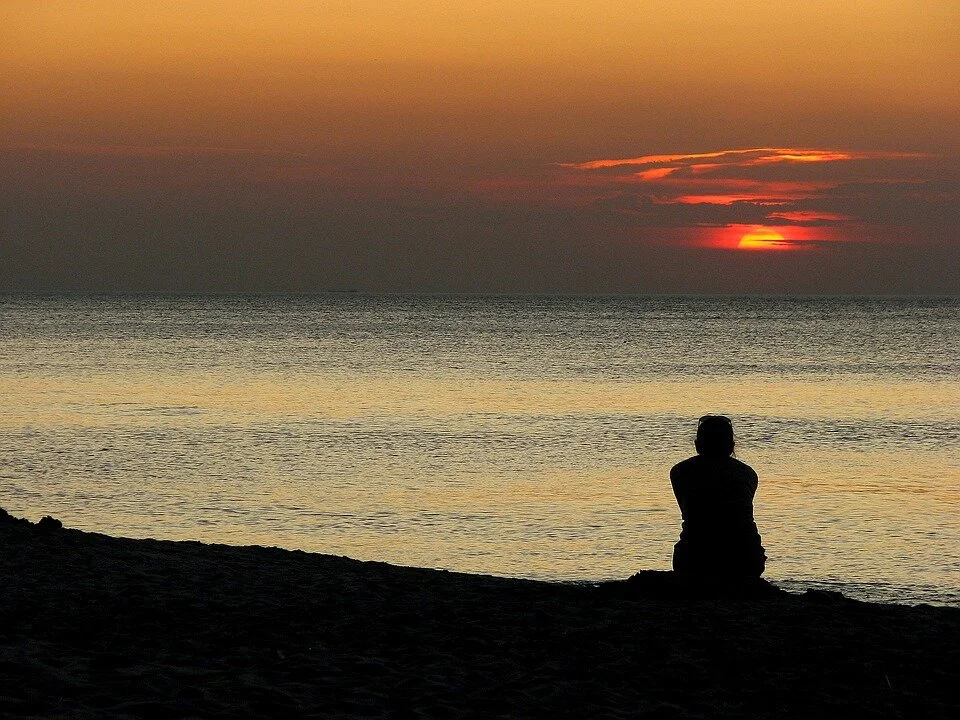Three Reasons to Practice Silence
Some pretty important people have said some pretty impactful things about silence:
“The quieter you become, the more you are able to hear” – Rumi
“Those who know do not speak. Those who speak do not know” – Lao Tzu
“The monotony and solitude of a quiet life stimulates the creative mind” – Albert Einstein
People around the world have been practicing intentional sustained silence for centuries. As someone who has been in the yoga world for 15 years, extended periods of silence isn’t a new concept to me. But when it is presented to people not entrenched in the yoga world, I often hear things like:
“Oh, I could NEVER do that!”
“Hey Jess! A silent retreat. You should try that! Ha!”
“Why would ANYONE want to do that!?”
Why practice sustained silence?
Mauna is a Sanskrit word meaning silence. Chances are you have experienced the power of silence in small slices, like to honor someone’s passing or in prayer. Maybe you’ve stood somewhere with an awe-inspiring view that left you speechless. Maybe you’ve watched dancers move in a way that left a long pause before the applause. So often we say things like, “there are no words to describe…” Mauna is a way to gain an understanding of that which is beyond words.
Swami Sivananda said: “Energy is wasted in idle talking and gossiping… By practicing mauna, the energy of speech is slowly transmuted into spiritual energy. Mauna develops will-force, curbs the impulse of speech, and gives peace of mind.”
Will-force:
The third Niyama, or moral code, in The Yoga Sutras of Patanjali, is Tapas. Tapas means discipline and is the will-force it takes to do the things we say we are going to do.
Tapas is riding out the urges you have to take a cigarette break when you’ve decided to quit smoking. It is sitting with your uncomfortable cravings for the sake of kicking a habit you no longer desire.
How would you feel if you were a smoker for many years and because of determined discipline you realized you no longer want a cigarette? How would it feel to have developed that force of will?
For those of you who say, “I could NEVER take a vow of silence,” this practice is for you! What if you tried to, were determined, and actually did? What will-force would you develop by sitting through the urges to talk and turn on your cell phone and text and comment? How strong might you feel? How could you translate this discipline into other areas of your life?
Curbing the impulse of speech:
For many people new to silence, mauna takes the form of periods of controlled speech. One reason this is challenging is because most people want to be heard. Having someone hear you, validate your feelings, and dialogue with is a way that most humans form connection and relationships.
According to Tracey Cook of EkhartYoga, so much of our identity is created by relating our experiences to those of other people and forming opinions that others validate.
How would your view of yourself change if you didn’t have others to relate to? What is your Identity beneath the identity that you curate for others on social media? One thing Coby Kozlowski, yoga educator and author, asks often is, “Who are you, really?”
Another thing Coby discusses is what she calls “energy dumping”. Have you ever been in a great mood until you cross paths with someone who makes you the receiving end of a 10-minute rant that leaves them feeling relieved but you feeling stressed? Have you ever been the ranter?
I love the quote “Are your words an improvement upon silence. It they aren’t, then why are you speaking?”
So many in Western culture yell about their feelings and opinions. With Mauna we practice keeping that energy in, processing and integrating it. We become more aware of our impulse to speak. With this awareness we are better able to control anger and channel our emotions. We become more skilled at pausing and carefully choosing our words. We are able to conserve the energy we might spew out and redirect it into creativity and productivity.
Peace of mind:
According to the Bhagavad Gita, mauna is about training our minds, not just our mouths, to be silent.
Pema Chödrön said, “You are the sky. Everything else – it’s just the weather.” There is the sky, and then there is thunder or snow or sun. There is you, and then there is the noise of your thoughts. Mauna gives us the space to experience this. It is deeper than just refraining from talking. It is the “silent state of the Self, beyond all constructs of ‘noise’”.
Mauna also helps us realize that there is so much aliveness outside of our inner worlds.
These were the rules of an activity on a leadership retreat I worked on: Find one thing to silently be with for one hour. Bring nothing with you except a clock to tell you when time is up.
When participants shared their experiences after, one woman emotionally told of being with an insect while it slowly died. This was a powerful and beautiful experience she would have never had if not for practicing mauna. She would have missed it had she been consumed by internal and external noise.
How can you practice Mauna?
Do a digital detox from 7pm-7am every day.
No talking, emails, or social media before work.
No talking, emails, or social media one hour before bed.

